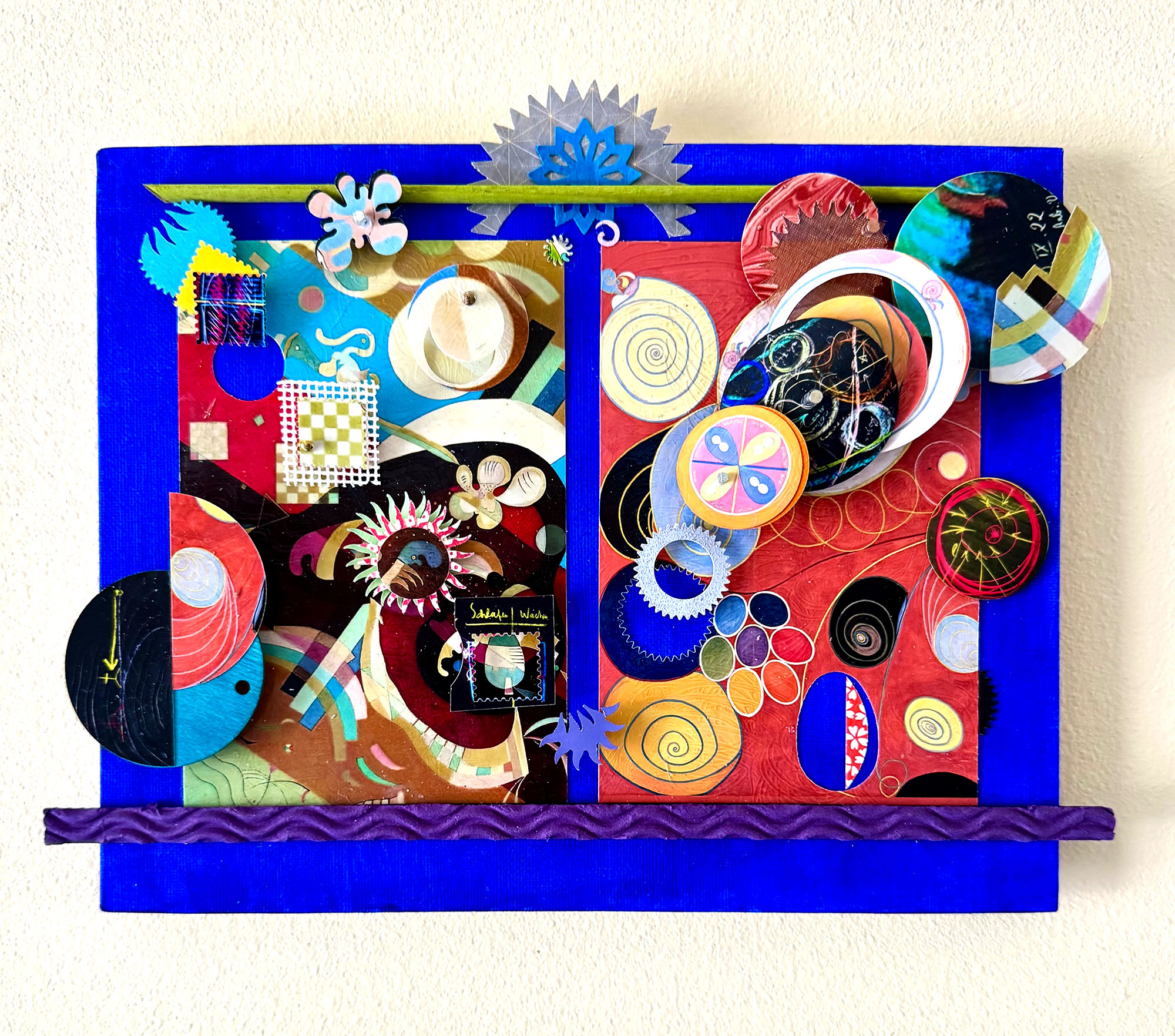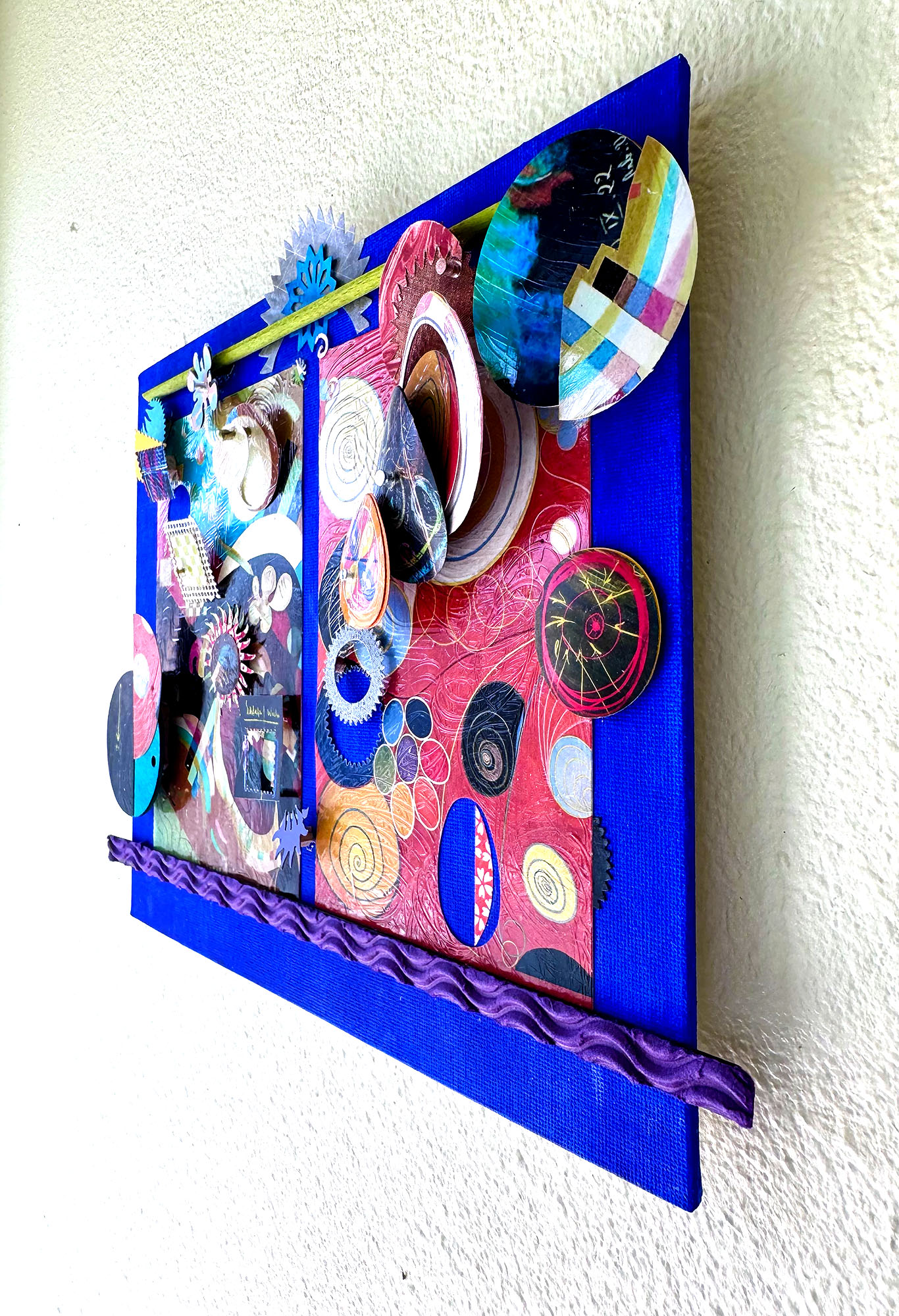
Rudolf Steiner was arguably the biggest arts influencer of the early 20th Century. He founded the Anthroposophical Society; his books and 5000 lectures were devoted to his teachings on philosophy; scientific spirituality and the arts; and humanity’s connection with the spiritual. Artists influenced by him include Wassily Kandinsky, Hilma af Klint, Paul Klee, Joseph Beuys, Piet Mondrian, and others. His teachings are complex, controversial, and still have followers today.
Steiner’s energetic blackboard drawings were part of his lectures. I have no proof, but I imagine these chalk images visually influenced, consciously or subconsciously, his lecture attendees, including Hilma af Klint and Kandinsky. After af Klint privately showed her works to Steiner, he famously told her not to show them to anyone for 50 years. Did he not want to be overshadowed by her towering works? No one knows. But I see common threads in his chalkboard diagrams; af Klint’s The Ten Largest, No. 3, Youth (1907); and Kandinsky’s Composition IX (1936); I bring them together in my own piece, Kandinsky, af Klint, and Steiner: Chalkboard Impressions.
…
“No record of the early Black Board drawings survives until 1919 when one of his colleague Emma Stolle began placing sheets of black paper over the blackboards in order to preserve these drawings. Consequently some 1100 drawings where archived and stored by the Trustees of Rudolf Steiner’s Estate at Dornach near Basle Switzerland.”
– Barry William Hale
https://www.shishigami.com/lexicon/content/steiner.html
Kandinsky, af Klint, and Steiner:
Chalkboard Impressions
By Kate Heyhoe, 2025
11 x 9 inches

